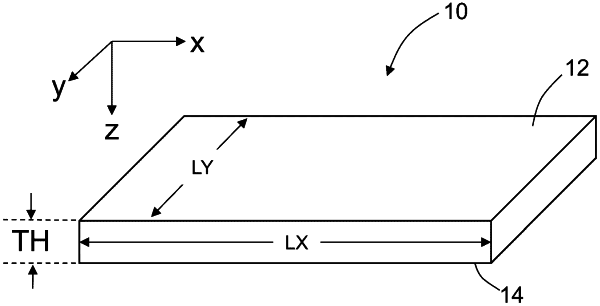| CPC C03C 4/0092 (2013.01) [C03C 3/083 (2013.01); C03C 3/085 (2013.01); C03C 3/087 (2013.01); C03C 3/091 (2013.01); C03C 3/093 (2013.01); C03C 4/18 (2013.01); C03C 21/002 (2013.01); C03C 21/005 (2013.01); G02B 6/1345 (2013.01); C03C 2204/00 (2013.01)] | 22 Claims |

|
1. A method of forming an ion-exchanged (IOX) waveguide in a substrate, comprising:
a) forming a mask on a top surface of the substrate, the mask defining at least one opening to the top surface, wherein the substrate comprises an alkali-aluminosilicate glass including Na and having a concentration of Fe equal to 50 parts per million (ppm) or less;
b) performing a first IOX process by providing a silver salt bath atop the top surface of the substrate and the mask, wherein, during the first IOX process, Ag+ ions exchange with Na+ ions from the top surface of the substrate through the at least one opening in the mask so as to form an initial IOX region having a maximum refractive index at the top surface of the substrate; and
c) performing a second IOX process by providing a sodium salt bath atop the top surface of the substrate, wherein, during the second IOX process, Na+ ions exchange with Ag+ ions from the initial IOX region of the top surface of the substrate to form from the initial IOX region a buried IOX region having a maximum refractive index below the top surface of the substrate, the buried IOX region and a surrounding portion of the substrate defining an IOX waveguide having an optical loss OL≤0.05 dB/cm and a birefringence magnitude |B|≤0.001, wherein the second IOX process is an Na—Ag IOX process.
|